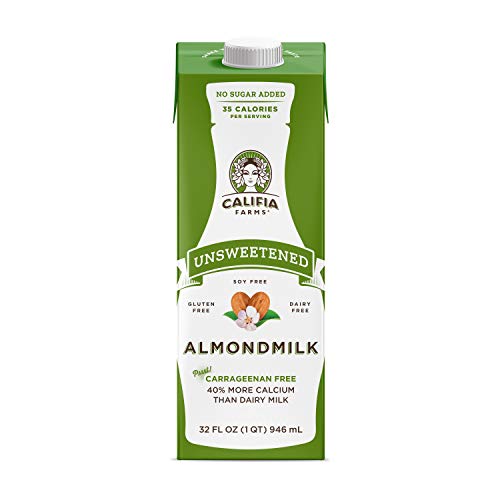Pain sucks, but luckily you can do more than take medications for your pain!
If you have irritable bowel syndrome (IBS), you know pain is a hot and sensitive topic. Visceral hypersensitivity is a common cause of pain associated with functional gastrointestinal disorders (FGID) like IBS. Visceral pain means the pain arises from our internal organs.
What is “PAIN”?
Pain is complicated, unpleasant, highly subjective, and real to the person with it. The Cambridge Dictionary defines pain as “a feeling of physical suffering caused by injury or illness” or “emotional or mental suffering” but these definitions do not fully encompass the reasons for the pain.
The International Association for the Study of Pain (2020) has the best definition of pain – “An unpleasant sensory and emotional experience associated with, or resembling that associated with, actual or potential tissue damage.”
FACT: No one can tell anyone else they are not experiencing pain. No one else is feeling exactly what’s in someone else’s body. It is one of the reasons pain rating scales were created – to help people quantify pain, and then descriptors (sharp, burning, stinging, stabbing, etc.) are asked to get a better idea of the pain.
Why do we feel pain?
The reason we feel pain at all is due to innervation. Our bodies have two main types of messenger neurons (nerve cells): afferent (sensory) and efferent (motor). Your gastrointestinal tract is full of afferent nerves that transmit sensory impulses from your internal (visceral) organs (stomach, intestines, gallbladder, pancreas, liver, etc.) to the central nervous system (brain and spinal cord). The sensory impulses from these afferent fibers allow you to feel pain, temperature, vibrations, movement, and light. When the transmission of the nerve-signaling sensory pathways is lost because of dysfunction, you may feel pain.
We know that prescribed analgesics medications are one of the ways in which pain is treated. According to Grundy, Erickson, and Brierley (2019), many of the conventional pain medications, like opioids and nonsteroidal anti-inflammatory drugs (NSAIDs), are usually inappropriate for management due to their side effects, tolerance (or lack thereof), lack of efficacy, and potential to exacerbate disorders/disease.
Constipation and dependence are side effects of opioid therapy, which can compound the problems already faced by those with FGIDs. Unfortunately, this explains why some prescribed medications only take a fraction of the pain away.
What are other non-pharmacologic interventions that can reduce pain?
#1- Mindfulness
When many people hear either “mindfulness,” “meditation,” or “mindful meditations,” they think, “woo woo.” However, numerous scientific studies show how these practices (breathwork, meditation, and gentle movement) help calm the mind and diminish stress. Mindfulness is the ability to be fully aware of where you are and what you are doing – it allows you to be “in the moment.” It’s an experience of focused attention to and openness to the present. When you relax, you place your body in a parasympathetic nervous system state: rest and digest. When you slow down your breathing or use specific breathwork techniques, you enter a more balanced state. When you do this regularly, you can strengthen your innate ability to be resilient in responding to stressors.
Mindfulness-based stress reduction therapies are group interventions that allow you to focus on acceptance of your thoughts, emotions, and sensations and learn to self-regulate these. Hypnosis can also help with pain relief.
Mindfulness practices can reduce pain intensity, decrease the use of analgesics, and improve the acceptance of pain. Participants in this study also reported improvement in their perceptions of their mental health-related quality of life, negative thoughts, and symptomatic experiences.
#2- Cognitive Behavioral Therapy (CBT)
This form of psychotherapy helps you change unhealthy or unhelpful mindsets and behavior patterns. It is focused on finding solutions to current problems using relaxation, stress, and pain-relief methods. CBT helps to decrease pain by modifying maladaptive thinking, physical symptoms, and emotional distress. Lim et al. (2018) found that women with chronic pain may benefit more from this modality than men.
#3- Acupuncture
A form of traditional Chinese medicine, it focuses on achieving energy homeostasis (balance) through the insertion of thin needles to stimulate meridians. Studies show it enhances endogenous opiates like endorphins, noradrenalin, acetylcholine, dopamine, glutamate, and others to relieve pain. It has little risk of serious adverse effects and is well-tolerated.
#4- Hot/Cold Therapy
These are simple to employ. Hot therapy increases blood flow (circulation) and metabolic processes to allow nutrients to flow to affected areas. Cold therapy helps to reduce circulation by constricting blood vessels, which helps decrease swelling and inflammation. If using either of these, they should only be used in 10–15-minute intervals and should not be applied directly to the skin (wrap in a towel first).
#5- Yoga, Qi Gong, & Tai Chi
The gentle movement that connects the mind and body can improve chronic pain and functioning. Not only does it improve flexibility, but it helps to decrease inflammation when done correctly and helps with the mental coping of pain.
#6- Music
Music is commonplace and not often considered a pain management strategy, but it can help those with acute and chronic pain. Honzel et al. (2020) reviewed multiple studies that self-reported pain scores diminished with the use of music therapy, likely due to distraction, immersion, and regulation of mood and emotions.
Other modalities can help reduce pain, depending on the location. These include massage, myofascial physical therapy, reiki, and many more. No matter the treatment you desire, it is always recommended to consult your provider first before using any of these.
- Cambridge University Press. (n.d.). Pain. In Cambridge Dictionary. Retrieved May 15, 2023.
- Coutaux, A. (2017). Non-pharmacological treatments for pain relief: TENS and acupuncture. Joint Bone Spine, 84(6), 657-661.
- Grundy, L., Erickson, A., & Brierley, S. M. (2019). Visceral Pain. Annual Review of Physiology, 81(1), 261-284.
- Honzel, E., Murthi, S., Brawn-Cinani, B., Colloca, G., Kier, C., Varshney, A., & Colloca, L. (2019). Virtual reality, music, and pain: developing the premise for an interdisciplinary approach to pain management. Pain, 160(9), 1909–1919.
- Lim, J. A., Choi, S. H., Lee, W. J., Jang, J. H., Moon, J. Y., Kim, Y. C., & Kang, D. H. (2018). Cognitive-behavioral therapy for patients with chronic pain: Implications of gender differences in empathy. Medicine, 97(23), e10867.
- Pérez-Fernández, J.I., Salaberria, K. & Ruiz de Ocenda, Á. Mindfulness-Based Pain Management (MBPM) for Chronic Pain: a Randomized Clinical Trial. Mindfulness 13, 3153–3165 (2022).
- Raja, S. N., Carr, D. B., Cohen, M., Finnerup, N. B., Flor, H., Gibson, S., Keefe, F. J., Mogil, J. S., Ringkamp, M., Sluka, K. A., Song, X. J., Stevens, B., Sullivan, M. D., Tutelman, P. R., Ushida, T., & Vader, K. (2020). The revised International Association for the Study of Pain definition of pain: concepts, challenges, and compromises. Pain, 161(9), 1976–1982.




















Comments
Join The Conversation...